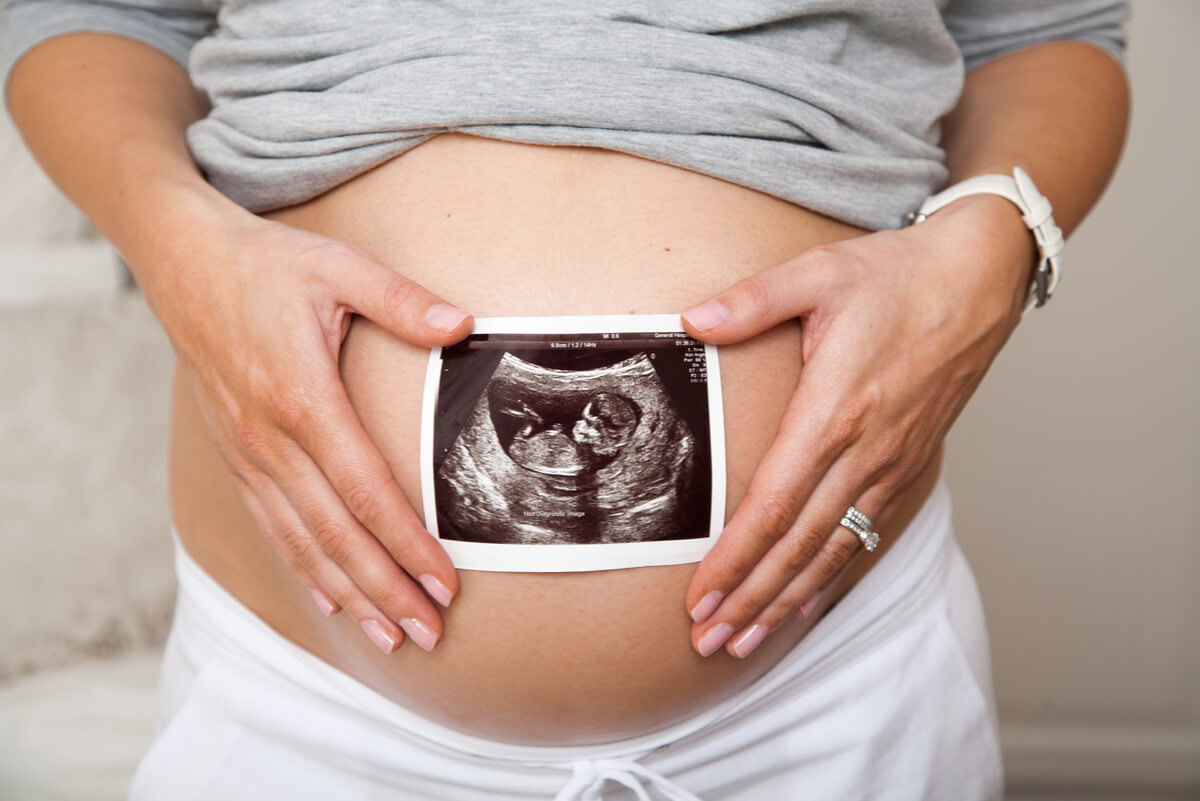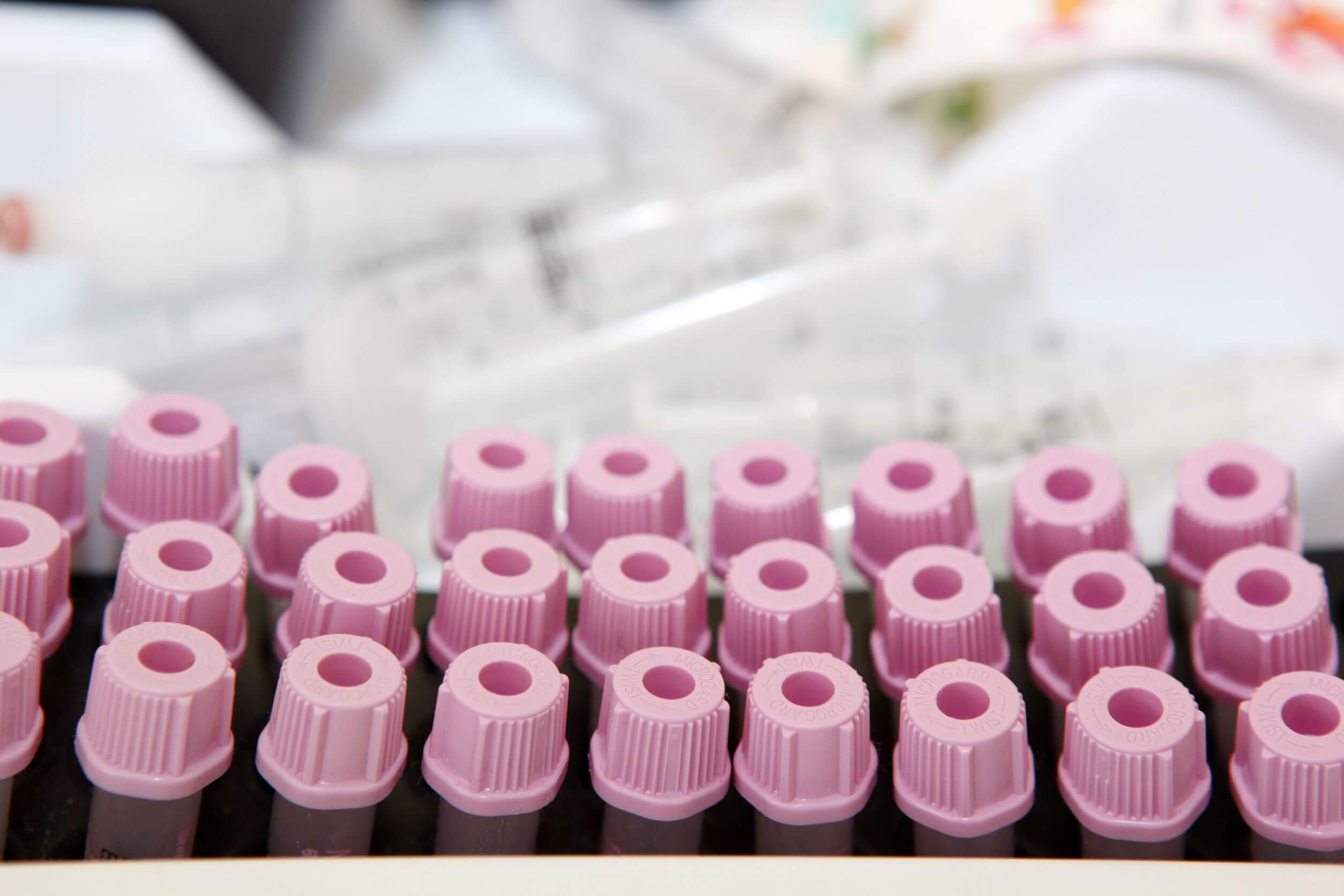Pregnancy Tests: Types and Recommendations

Pregnancy is a period in which women experience many different changes, which makes them prone to diseases. In this sense, it‘s vitally important to carry out a pregnancy test when you suspect you may be pregnant. Only then can specialized medical attention be obtained from the beginning. Find out about the different types of pregnancy tests in this article.
For thousands of years, man has tried to determine when women are pregnant. In fact, there are records that date back to 1350 BC. Pregnancy tests have evolved over the years, going from nonspecific methods to studies with 99% accuracy.
The first question that many women ask themselves when faced with a delay in menstruation is: am I pregnant? The only way to remove any doubts is to take a pregnancy test. Fortunately, there are many pregnancy tests that can give an accurate and reliable diagnosis. We’ll talk a little about them below.
Types of pregnancy tests

Pregnancy tests are specific tests that determine the levels of the hormone human chorionic gonadotropin (HCG) in the body. HCG rises only during pregnancy or in the presence of certain rare tumors, and is present in both urine and blood.
The different pregnancy tests that currently exist are divided depending on the fluid studied, and may be urine or blood tests. Urine tests are also known as home tests, while blood tests must be performed by trained medical personnel.
Urine or home tests
In many cases, the best time to perform a home pregnancy test is one week after missing menstruation delay.
During this period, the levels of HCG in the body will be so high that it can be detected in the urine and the result will be more reliable. Urine tests carried out before this time can give false negatives.
The first urine test is one of the most used methods to diagnose pregnancy around the world according to various studies. It allows the diagnosis to be made during the first few weeks and offers very reliable results when used properly.
One of the few disadvantages of home tests is the non-standardization of the results, which can lead to their misinterpretation. Fortunately, the various tests that exist include very precise instructions to minimize the possibility of misinterpretations.
Types of urine tests
Today there are many different pregnancy tests that can measure the presence of HCG in the urine, and all of them offer accurate and fast results. The most popular types of home tests include the following:
- Reactive urine strips: This is one of the easiest methods to use and involves inserting a strip into a container with urine. The strip will react to the presence of HCG after a few minutes, with 2 lines of a different color appearing if the result is positive.
- Drip urine: This consists of the use of a device similar to an old cassette, which has an opening to place a drop of urine with a dropper. It’s important to urinate into a container, take the sample and wait a few minutes before carrying out the test. A positive result is indicated by 2 lines.
- Urine flow test: This is an elongated cartridge with a special end on which you must urinate. The results can be displayed in 2 ways, the traditional pregnancy test will only show 2 lines and some give an early result. There’s also a digital test which shows the gestational age after a few minutes.
Blood test
Human chorionic gonadotropin levels may rise in the blood from day 10 after conception, that is, a few days after implantation bleeding. This pregnancy test may appear more reliable for some patients and allows for an earlier diagnosis than urine tests.
This test should be performed only in a specialized medical laboratory, where health personnel will proceed to draw venous blood. This test has very few risks, and the discomfort that may appear at the area of extraction doesn’t usually last more than a few minutes.
The main disadvantage of this test compared to urine tests is the delay in obtaining the results. Patients must wait a few hours or even a day to obtain a reliable diagnosis.
Types of blood tests

Hormones can be measured in two different ways in the blood, both qualitatively and quantitatively. Both tests will determine if the patient is pregnant, although the quantitative form offers additional data that can help the doctor determine certain variables.
- Qualitative blood analysis: This only allows you to determine the presence (or not) of the pregnancy hormone in the blood. It’s as accurate as a urine test and can be used from day 10 of pregnancy. This test will only indicate whether or not you’re pregnant.
- Quantitative blood test: Also known as beta HCG, it’s responsible for measuring the precise amount of the hormone in the blood. This test allows you to determine the gestational age, which means that it informs you how many weeks pregnant you are, and it’s able to detect even minimal amounts of the hormone.
Recommendations on pregnancy tests
These types of tests should be performed at the slightest suspicion of pregnancy. Pregnant women usually have special nutritional requirements, so medical control and an adequate diet are essential. In this sense, it’s important to go to a gynecological consultation as soon as possible after having a positive test result.
Fortunately, taking a pregnancy test doesn’t require any prior preparation and can be done at any time of the day. To obtain reliable results, it’s important to respect the periods mentioned above: 10 days for the blood test and at least 14 days for the urine test.
A negative pregnancy test doesn’t minimize the possibility of getting pregnant in the future, so contraception should be used to avoid unwanted pregnancies. The possibility of getting false positives or false negatives is low. However, it’s recommended to carry out an additional test in case of doubts and consult with the specialist.
A fast and reliable test
The different pregnancy tests available today have improved their accuracy over the years, so they have a minimal margin of error. They provide results in a short time, although blood tests may take a little longer.
The most important thing when you get a positive pregnancy test is to go to the doctor for them to monitor you correctly. Pregnancies without any type of medical control are more prone to complications that can affect maternal and fetal health, and can even have fatal consequences.
Pregnancy is a period in which women experience many different changes, which makes them prone to diseases. In this sense, it‘s vitally important to carry out a pregnancy test when you suspect you may be pregnant. Only then can specialized medical attention be obtained from the beginning. Find out about the different types of pregnancy tests in this article.
For thousands of years, man has tried to determine when women are pregnant. In fact, there are records that date back to 1350 BC. Pregnancy tests have evolved over the years, going from nonspecific methods to studies with 99% accuracy.
The first question that many women ask themselves when faced with a delay in menstruation is: am I pregnant? The only way to remove any doubts is to take a pregnancy test. Fortunately, there are many pregnancy tests that can give an accurate and reliable diagnosis. We’ll talk a little about them below.
Types of pregnancy tests

Pregnancy tests are specific tests that determine the levels of the hormone human chorionic gonadotropin (HCG) in the body. HCG rises only during pregnancy or in the presence of certain rare tumors, and is present in both urine and blood.
The different pregnancy tests that currently exist are divided depending on the fluid studied, and may be urine or blood tests. Urine tests are also known as home tests, while blood tests must be performed by trained medical personnel.
Urine or home tests
In many cases, the best time to perform a home pregnancy test is one week after missing menstruation delay.
During this period, the levels of HCG in the body will be so high that it can be detected in the urine and the result will be more reliable. Urine tests carried out before this time can give false negatives.
The first urine test is one of the most used methods to diagnose pregnancy around the world according to various studies. It allows the diagnosis to be made during the first few weeks and offers very reliable results when used properly.
One of the few disadvantages of home tests is the non-standardization of the results, which can lead to their misinterpretation. Fortunately, the various tests that exist include very precise instructions to minimize the possibility of misinterpretations.
Types of urine tests
Today there are many different pregnancy tests that can measure the presence of HCG in the urine, and all of them offer accurate and fast results. The most popular types of home tests include the following:
- Reactive urine strips: This is one of the easiest methods to use and involves inserting a strip into a container with urine. The strip will react to the presence of HCG after a few minutes, with 2 lines of a different color appearing if the result is positive.
- Drip urine: This consists of the use of a device similar to an old cassette, which has an opening to place a drop of urine with a dropper. It’s important to urinate into a container, take the sample and wait a few minutes before carrying out the test. A positive result is indicated by 2 lines.
- Urine flow test: This is an elongated cartridge with a special end on which you must urinate. The results can be displayed in 2 ways, the traditional pregnancy test will only show 2 lines and some give an early result. There’s also a digital test which shows the gestational age after a few minutes.
Blood test
Human chorionic gonadotropin levels may rise in the blood from day 10 after conception, that is, a few days after implantation bleeding. This pregnancy test may appear more reliable for some patients and allows for an earlier diagnosis than urine tests.
This test should be performed only in a specialized medical laboratory, where health personnel will proceed to draw venous blood. This test has very few risks, and the discomfort that may appear at the area of extraction doesn’t usually last more than a few minutes.
The main disadvantage of this test compared to urine tests is the delay in obtaining the results. Patients must wait a few hours or even a day to obtain a reliable diagnosis.
Types of blood tests

Hormones can be measured in two different ways in the blood, both qualitatively and quantitatively. Both tests will determine if the patient is pregnant, although the quantitative form offers additional data that can help the doctor determine certain variables.
- Qualitative blood analysis: This only allows you to determine the presence (or not) of the pregnancy hormone in the blood. It’s as accurate as a urine test and can be used from day 10 of pregnancy. This test will only indicate whether or not you’re pregnant.
- Quantitative blood test: Also known as beta HCG, it’s responsible for measuring the precise amount of the hormone in the blood. This test allows you to determine the gestational age, which means that it informs you how many weeks pregnant you are, and it’s able to detect even minimal amounts of the hormone.
Recommendations on pregnancy tests
These types of tests should be performed at the slightest suspicion of pregnancy. Pregnant women usually have special nutritional requirements, so medical control and an adequate diet are essential. In this sense, it’s important to go to a gynecological consultation as soon as possible after having a positive test result.
Fortunately, taking a pregnancy test doesn’t require any prior preparation and can be done at any time of the day. To obtain reliable results, it’s important to respect the periods mentioned above: 10 days for the blood test and at least 14 days for the urine test.
A negative pregnancy test doesn’t minimize the possibility of getting pregnant in the future, so contraception should be used to avoid unwanted pregnancies. The possibility of getting false positives or false negatives is low. However, it’s recommended to carry out an additional test in case of doubts and consult with the specialist.
A fast and reliable test
The different pregnancy tests available today have improved their accuracy over the years, so they have a minimal margin of error. They provide results in a short time, although blood tests may take a little longer.
The most important thing when you get a positive pregnancy test is to go to the doctor for them to monitor you correctly. Pregnancies without any type of medical control are more prone to complications that can affect maternal and fetal health, and can even have fatal consequences.
- Velásquez N. Pruebas para diagnóstico de embarazo. Rev Obstet Ginecol Venez. 2009; 69( 3 ): 186-192.
- Gnoth C, Johnson S. Strips of Hope: Accuracy of Home Pregnancy Tests and New Developments. Geburtshilfe Frauenheilkd. 2014;74(7):661-669.
- Robinson JH. What the pregnancy test is testing. Br J Sociol. 2020;71(3):460-473.
- Wise LA, Wang TR, Willis SK, Wesselink AK, Rothman KJ, Hatch EE. Effect of a Home Pregnancy Test Intervention on Cohort Retention and Pregnancy Detection: A Randomized Trial. Am J Epidemiol. 2020; 189(8):773-778.
- Rottenstreich M, Grisaru-Granovsky S, Rottenstreich A. The value of a registry negative urine pregnancy test for the prediction of a future unintended pregnancy among young women. Eur J Contracept Reprod Health Care. 2018;23(3):179-182.
- Montagnana M, Trenti T, Aloe R, Cervellin G, Lippi G. Human chorionic gonadotropin in pregnancy diagnostics. Clin Chim Acta. 2011;412(17-18):1515-20.
Este texto se ofrece únicamente con propósitos informativos y no reemplaza la consulta con un profesional. Ante dudas, consulta a tu especialista.







